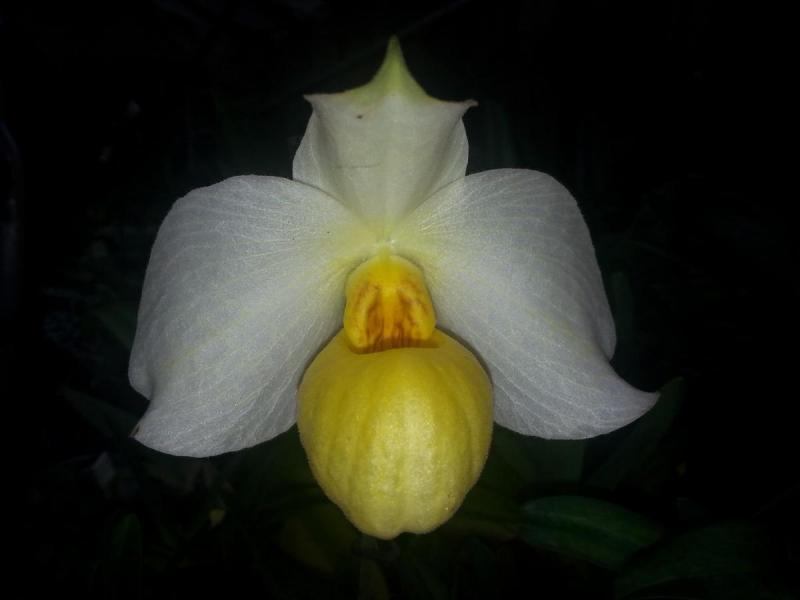Paphiopedilum emersonii
Also known as: Emerson's Paphiopedilum or Paphiopedilum emersonii f. luteum Paphiopedilum emersonii h.f. semialbum Paphiopedilum emersonii h.v. huonglanae Paphiopedilum emersonii h.f. albo-flavum Paphiopedilum emersonii h.v. angustipetalum Paphiopedilum emersonii h.v. kwang-nanensis Paphiopedilum emersonii h.v. guangxiensis Paphiopedilum emersonii f. album Paphiopedilum huonglanae in the subfamily: Cypripedioideae
Native to: Guangxi - China Yunnan - China
General Information
Emerson's Paphiopedilum is a small warm growing lithophytic orchid belonging to the sub family Cypripedioideae native to China. It is named after the American Orchid Enthusiast.
Plant Description
Grows to 18cm. Each new growth has numerous leathery leaves that grow to 3-25cm long. Pseudobulbs grow to 18cm
Substrate(s)
- Coarse
- Sand
Care Notes
These orchids like to be watered regulary, especially during warm weather, and prefer a well draining mix or also do well mounted, provided they can be watered daily or even many times a day.
These are quite a forgiving orchid, there are no special requirements to get this orchid to flower, just good care and consistent conditions. Larger plants may be more fussy and can react poorly to change; a poorly timed repotting, a pest infection or an unusually hot day can set them back for a couple of years. However, even plants that have been treated poorly can thrive, and if they are set back they often recover much stronger then they would otherwise be.
Climate
Grows at low elevations. Rainfall ranges from 8mm to 328mm per day, heaviest in August and lightest in December. Temperature ranges from 9C to 31C, highest in July (23C to 31C) and lowest in December (9C to 16C).
Watering
These orchids prefer a wet-dry cycle between waterings, they should be watered frequently but only when the moisture is approaching dryness, where the pot feels light and/or the media looks dry. Keep an eye on mounted orchids in warm weather as they may dehydrate quickly.
Fertiliser
These orchids do not need to be regularly fertilised and roots may be sensitive to salt build-up, dying back and therefore impairing the plants growth or even killing it.
If fertilising, use half to quarter of the recommended amount of fertiliser. If they receive fertiliser as part of a collection, be sure to flush out the pots regularly with fresh water and monitor the roots by checking how much resistance is given by the plant when nudged in its pot or mount. If the plant becomes wobbly or loose, repot in fresh mix or rinse the media/mount thoroughly and do not fertilise for at least 3 months.
Be sure to flush out excess fertiliser by running water through the media regularly year round. Use a high Nitrogen fertiliser year round. Use a high Phosphorous fertiliser during Summer and Winter. Reduce fertiliser when plant is dormant during Spring.Potting
Use water retentive media such as moss to prevent roots from drying out quickly Repotting is best done annually.





















